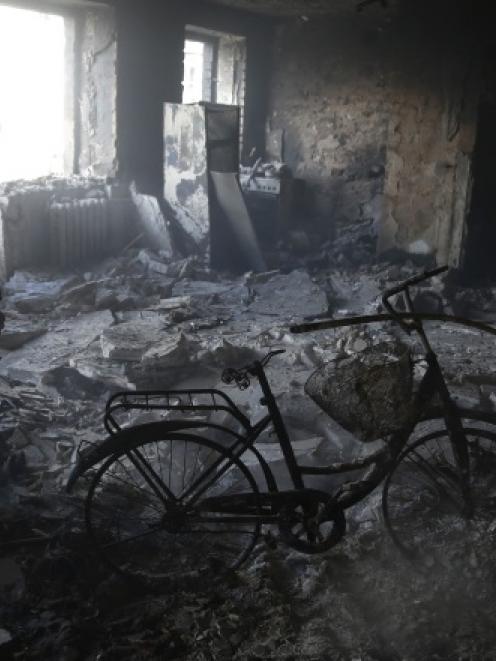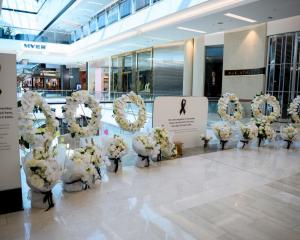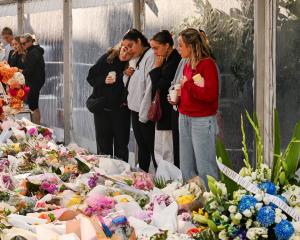
It had been safe to leave for several days, but Nina Shono, 80, one of eight people who sheltered in this basement through weeks of intense bombardment, chose to stay. She tried to describe her fear.
"When we were bombed, we were praying and I was crossing myself, everything was collapsing. One explosion. The second explosion, the third. But we are still sitting here," she said.
One of the biggest battles of the Ukraine war ended last week in a humiliating defeat for government troops, thousands of whom pulled out of this town after a siege and onslaught by separatist fighters.
Most of Debaltseve's 26,000 residents fled during the fighting. But according to the Red Cross as many as 5,000 stayed behind, many too elderly to flee. No one has attempted to tally the civilian deaths.
Shono's neighbour, Alexander Drozd, 65, said they had survived on bread and water and whatever jars of pickles and conserves they had managed to salvage before they abandoned their homes for the cellar.
"During the heavy shelling we couldn't stick our heads out from the basement. The shelling was from all sides, from everywhere," he said. "We ran out of candles. We had no fuel for a generator. It was impossible to deliver it."
Four days after rebels captured the town, the dead body of a man with a part of his face missing was lying near a house.
The eastern district of the town suffered the worst - all buildings severely damaged, holes blasted through brick walls, trees shorn of branches, shrapnel littering the ground.
Smoke wafted from makeshift chimney pipes poking out of cellars where people were still sheltering beneath the ruins.
"There was more destruction in the last three or four days than in the entire war before. It was straight and direct fire. We saw the SAU shoot at our homes," said Drozd, referring to a self-propelled howitzer on treads that looks like a small tank with a giant gun.
PORRIDGE AND TEA
When the rebel advance began a month ago, all the shops shut. Volunteers distributed some aid, but only in the centre of town, which was impossible for many people to reach during the shelling.
Even that aid stopped during the final days of the siege. Even after the town fell last week, mines still buried in the roads meant it took several days for the Red Cross to deliver five trucks carrying food. The rebels brought hot porridge and tea.
Around 700 people turned up in the centre of town on Sunday to queue up for humanitarian aid.
"A lot of people have left, only a third of population or maybe less are still here," said 25-year-old Tatiana Kraynyaya, holding a Red Cross box with pasta and sardines.












